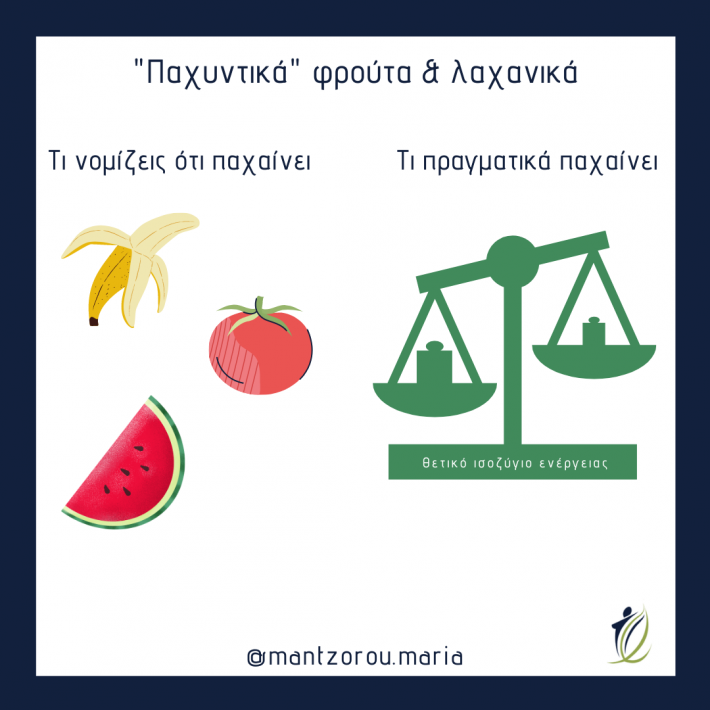Can Bioelectrical Impedance Analysis and BMI be a Prognostic Tool in Head and Neck Cancer Patients? A Review of the Evidence

Maria Mantzorou, Maria Tolia, Antigoni Poultsidi, Eleni Pavlidou, Sousana K Papadopoulou, Dimitrios Papandreou and Constantinos Giaginis Can Bioelectrical Impedance Analysis and BMI be a Prognostic Tool in Head and Neck Cancer Patients? A Review of the Evidence Cancers 2020: 12, 557
Background: Malnutrition can significantly affect disease progression and patient survival. The efficiency of weight loss and bioimpedance analysis (BIA)-derived measures in the evaluation of malnutrition, and disease progression and prognosis in patients with head and neck cancer (HNC) are an important area of research. Method: The PubMed database was thoroughly searched, using relative keywords in order to identify clinical trials that investigated the role of BIA-derived measures and weight loss on the disease progression and prognosis of patients with HNC. Twenty- seven studies met the criteria. More specifically, six studies examined the prognostic role of the tissue electrical properties in HNC patients; five examined the role of the tissue electrical properties on identifying malnutrition; four studies looked at the changes in the tissue electrical properties of HNC patients; and 12 examined the prognostic role of weight loss on survival and/or treatment outcomes. Results: Several studies have investigated the role of nutritional status tools on prognosis in HNC patients. Current studies investigating the potential of BIA-derived raw data have shown that phase angle (PA) and capacitance of the cell membrane may be considered prognostic factors of survival. Weight loss may be a prognostic factor for treatment toxicity and survival, despite some conflicting evidence. Conclusions: Further studies are recommended to clarify the role of BIA- derived measures on patients’ nutritional status and the impact of PA on clinical outcomes as well as the prognostic role of weight loss.
Αγορά τροφίμων: κάνουμε καλύτερες επιλογές για υγιεινή διατροφή

Πόσες φορές έχετε πάει να αγοράσετε τρόφιμα και καταλήξατε με γλυκά και αλμυρά σνακ και άλλα προϊόντα που δεν είχατε στο νου να αγοράσετε, ενώ ξεχάσατε κάποια απαραίτητα;
Η υγιεινή διατροφή ξεκινάει από τα ψώνια του σούπερ μάρκετ! Δεν μπορούμε να μαγειρέψουμε ένα υγιεινό γεύμα εάν δεν έχουμε αγοράσει τα κατάλληλα τρόφιμα!
Πώς, λοιπόν, μπορούμε να κάνουμε καλύτερες -και πιο οικονομικές- επιλογές κατά την αγορά τροφίμων;
1. Αποφύγετε τα ψώνια όταν είστε πεινασμένοι ή νηστικοί! Όταν πεινάμε, τα γλυκά και αλμυρά σνακ είναι πιο ελκυστικά και καταλήγουμε να αγοράζουμε και να καταναλώνουμε θερμιδικά πυκνά τρόφιμα με λίγα θρεπτικά συστατικά. Μπορείτε να πάτε στο σούπερ μάρκετ αφού έχετε φάει!
2. Κάντε λίστα! Αφού δείτε τι λείπει από το ντουλάπι και το ψυγείο σας, κάντε μία λίστα με όλα τα τρόφιμα που χρειάζεστε. Μπορείτε, επίσης, να φτιάξετε μία γενική λίστα με τα τρόφιμα που καταναλώνετε πιο συχνά και χρειάζεστε στο σπίτι σας σε καθημερινή βάση, να την εκτυπώσετε σε αρκετά έντυπα και να τη χρησιμοποιείτε για να σημειώνετε τι χρειάζεστε! Βεβαιωθείτε ότι έχετε πληθώρα φρούτων και λαχανικών -ιδανικά τοπικής παραγωγής και της εποχής-, μη επεξεργασμένα προϊόντα, προϊόντα ολικής άλεσης, όσπρια και φασόλια. Επιπλέον, προμηθευτείτε ψάρια, κρέας χωρίς πολύ λίπος και πουλερικά, ενώ επιλέξτε γαλακτοκομικά χαμηλά σε λιπαρά.
3. Για να μειώσετε το λογαριασμό σας στο ταμείο, βάλτε στη λίστα σας τρόφιμα που είναι σε προσφορά! Πλέον τα περισσότερα σουπερ μάρκετ διαφημίζουν στην τηλεόραση και σε έντυπα φυλλάδια τις προσφορές της εβδομάδας. Βάσει αυτών μπορείτε να φτιάξετε το μενού της εβδομάδας και τη λίστα σας. Τα τοπικά και εντός εποχής φρούτα και λαχανικά είναι πιο φτηνά, ενώ και τα κατεψυγμένα είναι φρέσκα (απλά όχι νωπά) και πιο φτηνά!
4. Διαβάστε τις ετικέτες των τροφίμων! Η συσκευασία μπορεί να είναι παραπλανητική, για παράδειγμα, ενώ αναγράφεται ότι δεν περιέχεται ζάχαρη, να περιέχονται άλλα σάκχαρα! Επίσης, πολλά από τα προϊόντα που μαρκετάρονται για παιδιά περιέχουν αρκετά πρόσθετα σάκχαρα και συντηρητικά! Αποφύγετε τα επεξεργασμένα προϊόντα, τα τρόφιμα που είναι πλούσια σε λιπαρά, πρόσθετα σάκχαρα και αλάτι, όπως έτοιμα γλυκίσματα και άλλα σνακ, σφολιατοειδή, έτοιμες σάλτσες και ροφήματα με ζάχαρη.
5. Αποφύγετε τους διαδρόμους των πειρασμών και επιμείνετε στη λίστα σας! Κατά το πλείστον, γνωρίζουμε πού θα βρούμε τα προϊόντα που ψάχνουμε στο σούπερ μάρκετ. Κινηθείτε στους διαδρόμους όπου θα βρείτε τα τρόφιμα που χρειάζεστε και αποφύγετε αυτούς όπου υπάρχουν γλυκά και αλμυρά σνακ και άλλα επεξεργασμένα τρόφιμα. Πολλές φορές στο ταμείο βρίσκουμε σοκολάτες και άλλα γλυκά. Αντισταθείτε στον πειρασμό να τα αγοράσετε και εξηγήστε στα παιδιά ότι τα γλυκίσματα είναι καλό να τα τρώμε σε ειδικές περιστάσεις.
Βελτιώνοντας το καλάθι του σούπερ μάρκετ μπορούμε να βελτιώσουμε την υγεία μας! Όταν δεν έχουμε εύκολη πρόσβαση σε θερμιδικά πυκνά τρόφιμα- πειρασμούς, μπορούμε ευκολότερα να βελτιώσουμε τη διατροφή μας! Έτσι, επιλέγοντας τρόφιμα που είναι χαμηλά σε κορεσμένα και τρανς λιπαρά οξέα, πρόσθετα σάκχαρα και αλάτι, μπορούμε να ετοιμάσουμε υγιεινά γεύματα που μας προσφέρουν τα απαραίτητα θρεπτικά συστατικά και ενέργεια για να λειτουργεί το σώμα μας σωστά και να διατηρήσουμε ένα υγιές βάρος.
Καφές: αγαπημένο ρόφημα με ευεργετικές ιδιότητες

O καφές είναι από τα αγαπημένα ροφήματα, με 400 δισεκατομμύρια κούπες καφέ να πωλούνται το χρόνο, ανά τον κόσμο. Μια κούπα καφέ, σκέτο, χωρίς γάλα και ζάχαρη, έχει σχεδόν μηδενικές θερμίδες, ενώ είναι πλούσιος σε αντιοξειδωτικά, ακόμη και αν είναι αποκαφεϊνωμένος.
Μάλιστα, στην Αμερική, ο καφές αποτελεί τη μεγαλύτερη πηγή αντιοξειδωτικών. Πολλές είναι οι έρευνες που έχουν γίνει γύρω από την ευεργετική του δράση στην υγεία, με τη βιβλιογραφία να δείχνει ότι σχετίζεται με μειωμένο κίνδυνο για εμφάνιση αρκετών ασθενειών.
Πιο συγκεκριμένα, η κατανάλωση καφέ φαίνεται να προστατεύει από το διαβήτη τύπου 2, μέσω έμμεσου ελέγχου των ορμονών του φύλου, που παίζουν ρόλο στην εμφάνιση της νόσου. Μάλιστα, η αύξηση της κατανάλωσης καφέ σε πάνω από 1 κούπα καφέ την ημέρα σε χρονική περίοδο 4 ετών, μείωσε τον κίνδυνο για διαβήτη τύπου 2 κατά 11%, για τα επόμενα 4 χρόνια.
Η υψηλή κατανάλωση καφέ και καφεΐνης συνδέεται με μικρότερη επίπτωση της άνοιας και της νόσου Parkinson, ενώ η καφεΐνη μπορεί να βοηθήσει στον έλεγχο της κινητικότητας σε άτομα που ήδη πάσχουν από τη νόσο.
Η τακτική κατανάλωση καφέ συνδέεται με μειωμένο κίνδυνο εμφάνισης πρωτογενούς σκληρωτικής χολαγγειίτιδας, μια σπάνια αυτοάνοση νόσος. Μάλιστα, σε άτομα που καταναλώνουν αλκοόλ, η κατανάλωση καφέ μπορεί να μειώσει την επίπτωση της κίρρωσης του ήπατος και το θάνατο λόγω αυτής της νόσου, ακόμα και αν ο καφές δεν περιέχει καφεΐνη.
Επιπλέον, η κατανάλωση καφέ φαίνεται να μειώνει τον κίνδυνο για καρκίνο του ήπατος κατά 40%, ενώ με κατανάλωση πάνω από 3 κούπες καφέ την ημέρα ο κίνδυνος μειώνεται κατά 50%!
Όσον αφορά τα καρδιαγγειακά νοσήματα, η μέτρια κατανάλωση καφέ προστατεύει από την συγκοπή, ενώ η κατανάλωση 4 καφέδων την ημέρα μειώνει τον κίνδυνο συγκοπής κατά 11%.
Από την άλλη πλευρά, άτομα με υπέρταση που δυσκολεύονται να την ελέγξουν, είναι καλό να αποφεύγουν την κατανάλωση καφέ, και να τον αντικαταστήσουν με ντεκαφεϊνέ.
Η υπερκατανάλωση καφέ μπορεί να οδηγήσει σε ανεπιθύμητες επιπτώσεις, όπως αίσθημα άγχους, ειδικά σε άτομα με προϋπάρχον σύνδρομο άγχους, ενώ συνδέεται με συμπτώματα κατάθλιψης.
Επιπλέον, η κατανάλωση καφέ αργά το απόγευμα ή το βράδυ μπορεί να επιφέρει διαταραχές ύπνου. Υψηλή κατανάλωση καφεΐνης μειώνει τις πιθανότητες για εγκυμοσύνη, επομένως συστήνεται μείωση της κατανάλωσής του από γυναίκες που επιθυμούν να κυοφορήσουν.
Παράλληλα, οι εγκυμονούσες πρέπει να αποφεύγουν τον συμβατικό καφέ, καθώς τα έμβρυα είναι ευαίσθητα στην καφεΐνη την οποία μεταβολίζουν αργά. Επίσης, ο μη φιλτραρισμένος καφές, όπως ο ελληνικός ή ο γαλλικός, που γίνεται σε καφετιέρα χωρίς φίλτρο, περιέχουν περισσότερη καφεστόλη, η οποία αυξάνει την κακή χοληστερόλη «LDL».
Ο καφές περιέχει πληθώρα συστατικών, συμπεριλαμβανομένης της καφεΐνης και αντιοξειδωτικών. Μέχρι 6 κούπες καφέ την ημέρα δεν φαίνεται να έχουν αρνητική επίδραση στη θνησιμότητα, αν και τα οφέλη φαίνονται και σε κατανάλωση 1-2 κούπες καφέ την ημέρα, ενώ όλο και περισσότερες έρευνες αναγνωρίζουν τα οφέλη του στην υγεία.
Βέβαια, οι έρευνες επικεντρώνονται σε σκέτο καφέ, ενδεχομένως με λίγη ζάχαρη ή γάλα, και όχι στα ροφήματα που περιέχουν αρκετή ζάχαρη ή σιρόπι και σαντιγί.
Επομένως, απολαύστε τον καφέ σας, είτε έχει είτε όχι καφεΐνη, και προτιμείστε τον σκέτο ή προσθέστε λίγη ζάχαρη ή μη θερμιδικά γλυκαντικά ή/και λίγο γάλα.
Το καρπούζι παχαίνει;

"Το καρπούζι παχαίνει και έχει πολλή ζάχαρη". Μια φράση που ακουμε συχνά τετοια εποχη!
Πολλοί θεωρούν οτι λόγω της γλυκιάς γεύσης το καρπούζι έχει πολλή ζάχαρη & αρκετές θερμίδες, με αποτέλεσμα να "παχαίνει".
Στην πραγματικότητα, κάτι τέτοιο δεν ισχύει, καθώς δεν υπάρχει κάποιο τρόφιμο του οποίου η κατανάλωση οδηγεί αυτομάτως σε αυξηση του βαρους.
Γνωρίζετε ποιά είναι τα υποκατάστατα της ζάχαρης;
200 γραμμάρια καρπουζιού αποδίδουν μόλις 60 θερμίδες, ενώ τα σάκχαρα των φρούτων δεν ανήκουν στην κατηγορία των ελεύθερων σακχάρων (ζάχαρη)! Μαλιστα, ενώ το καρπουζι έχει υψηλό γλυκαιμικό δείκτη, έχει χαμηλό γλυκαιμικό φορτίο, και είναι καλή επιλογη για άτομα άτομα με διαβήτη!
Μάλιστα, το καρπούζι, όπως και όλα τα φρούτα & τα λαχανικά περιέχουν και μεγάλο ποσοστό νερού, το οποίο συμβάλλει στην ενυδάτωση μας!
Δυστυχώς, διατροφικοί μύθοι γύρω από φρούτα & λαχανικά, τα οποία υποτίθεται οτι παχαίνουν κυκλοφορούν εδώ και χρόνια, και ας έχουν καταριφθεί! Το γεγονός αυτό οδηγεί σε μη υγιή σχέση με το φαγητό και χωρίς λόγο αποφυγή θρεπτικών τροφίμων!
Απολαύστε τα φρούτα και τα λαχανικά άφοβα, με στόχο την κατανάλωση τουλάχιστον 5 μερίδων φρούτων & λαχανικών την ημέρα!





